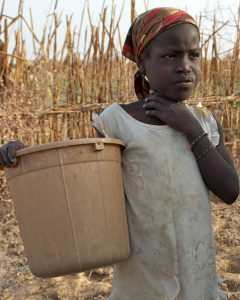by Jennifer Dees
We’re midsummer. Kids have been swimming for months. They’ve found out whether their skin is the type that tans or sunburns. They’ve gone to too many sleepovers to count. And at some point, usually around now, they’re checking the calendar for the day school starts. When I was a kid, I’d even open a pretend school and write my own math problems. The last day of school, I told myself I never wanted to go back, but with so much time on my hands, without opportunities to challenge myself or develop my brain, I eventually became bored. The thought of eternal summer no longer seemed appealing. Fortunately, school always came back around, and I’ve learned and grown so much because of it. For some girls, such as those growing up in Niger, life is one hot, endless summer.

In Niger, when a girl gets up in the morning, she may see a group of children, more boys than girls, gathering. They are going to learn something today at school, but she won’t know what it is. Her many siblings are thirsty, and the day is going be sweltering. If she doesn’t leave now, they’ll be without water for the day. Of course she must choose her family, choose water. Does she really have a choice? She sets off to the nearest water source. For a rural village without a well, this means walking for miles. When she and the other women and girls arrive at the river or, they find the murky, brown water is perceptibly lower. She fills a container with water and carries the heavy load back to her village. By now, it’s too late to go to school, and she gets on with other household chores.
The next day will begin and end in much the same way. According to a 2013 UNICEF report, 57.4% of Nigerien girls are enrolled in primary school, but only 9.6% make it to secondary school.. According to a 2009 report by Harvard’s Center on the Developing Child, barriers to educational achievement start when children are young, when thousands of neural connections are growing per second. How much a child learns early on will have an impact on how easily their brains can make connections in the future.
Education is key to self-sufficiency. When girls go to school, they gain skills to earn an income, and they learn how to take care of their health and finances. They feel empowered and hopeful enough about their future to resist early marriages that they might otherwise be pressured into. When Wells Bring Hope drills a well in a village, school is in. Education becomes a reality for the girls in the village. People might not think of education as a resource. It is not as essential as water when it comes to survival, but when it comes to lasting change and improvement, education has the power to transform these girls’ lives.


